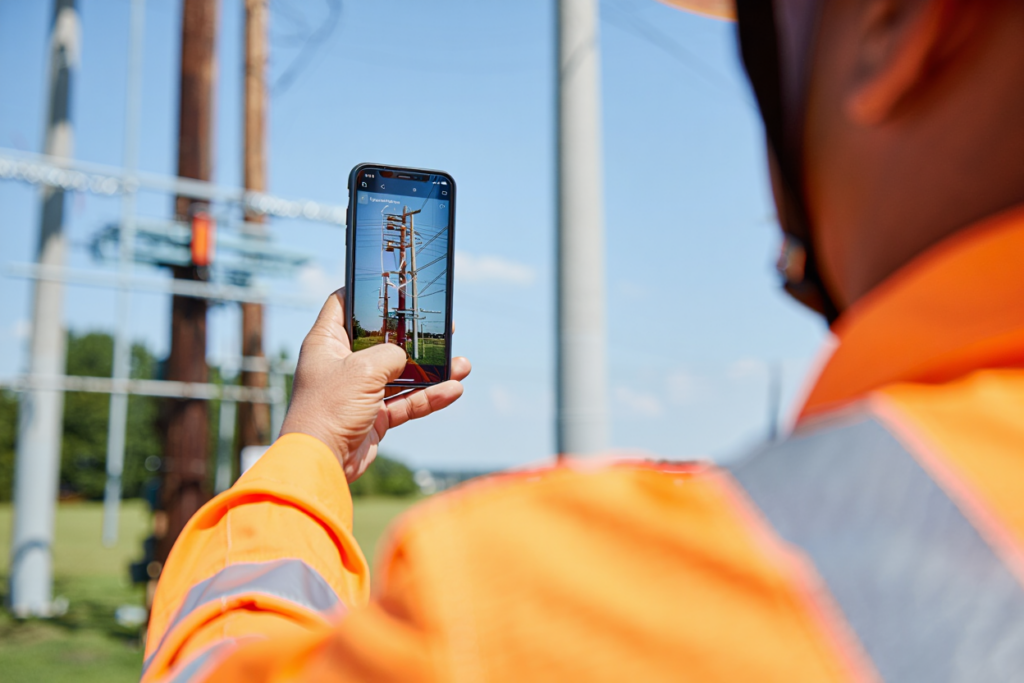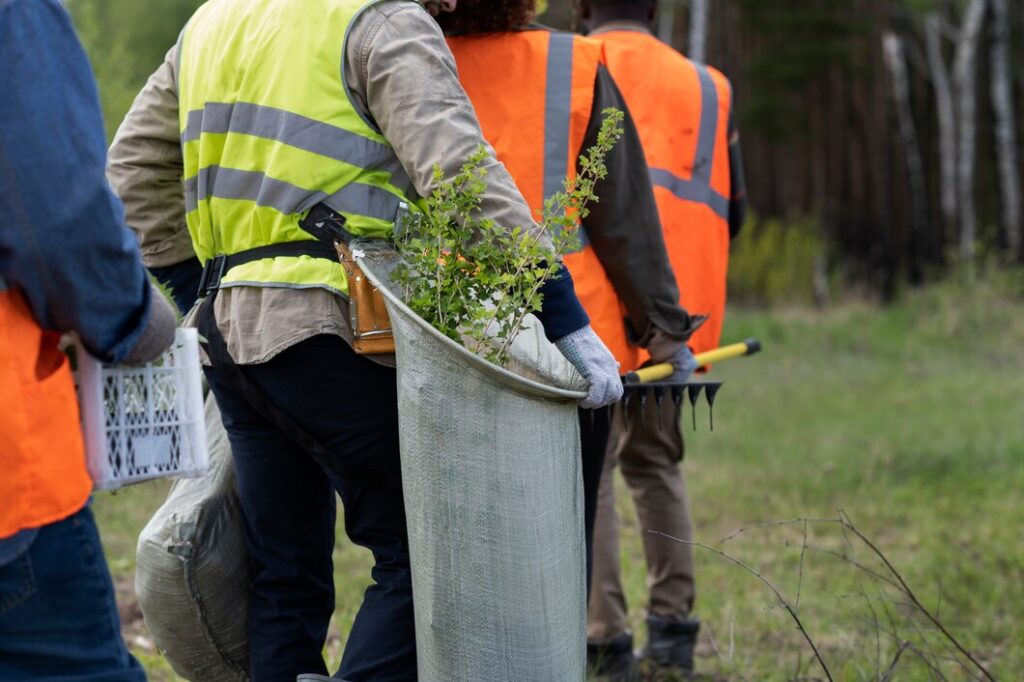A well-executed Safety Management System (SMS) is the backbone of proactive, compliant, and efficient workplace safety—especially in high-risk sectors like construction, utilities, and infrastructure. In a world of increasingly complex safety requirements and rising incident costs, relying on manual processes or siloed systems just doesn’t cut it. Businesses need smart, connected, and predictive safety protocols.
In this guide, we’ll break down what a Safety Management System is, why it’s essential, what its key components are, and how modern tools—like AI-powered platforms—are transforming safety from a checkbox activity into a strategic advantage. If you’re looking to build or enhance your SMS in 2025, this is your roadmap.
What is a Safety Management System (SMS)?
A Safety Management System (SMS) is a structured framework designed to manage workplace safety by proactively identifying, assessing, mitigating, and monitoring risks. It brings together policies, procedures, tools, and people to ensure that safety is embedded into every level of the organization.
The primary goals of an SMS include:
- Preventing workplace incidents and injuries
- Ensuring compliance with OSHA, ISO 45001, and other regulations
- Standardizing safety processes across job sites or business units
- Improving overall operational resilience
In sectors like construction and utilities—where hazards are dynamic and fieldwork is inherently risky—an SMS becomes the foundation for reducing the Total Recordable Incident Rate (TRIR) and ensuring a culture of continuous improvement.
Why SMS Matters Now More Than Ever
The regulatory and risk landscape is shifting fast. OSHA’s 2024 e-reporting rule now requires detailed digital submissions of workplace injury data for high-hazard sectors, and the EU’s CSRD will force many U.S.-based contractors and suppliers to disclose health and safety metrics for ESG compliance.
On top of this, the growing adoption of AI, IoT, and mobile-first technology is reshaping what’s possible in safety management. Companies who fail to modernize may fall behind in both compliance and competitiveness. On the flip side, those who do embrace intelligent safety systems are seeing measurable results:
- 30% reduction in incident rates within 12 months (Field1st internal pilot data)
- Up to 40% faster audit readiness through automated compliance tracking
- Improved workforce engagement, with mobile app adoption exceeding 80% across field crews
With safety software now offering real-time data, predictive alerts, and seamless system integration, SMS has evolved from a passive document repository into an active, always-on risk management engine.
Benefits of a Safety Management System
Ensuring Regulatory Compliance
An SMS ensures that your business meets all relevant safety regulations and standards. From OSHA recordkeeping requirements to ISO 45001 certification, a compliant SMS reduces the risk of fines, legal exposure, and project shutdowns.
Platforms like Field1st offer automated compliance tracking, real-time reporting, and built-in audit logs that simplify OSHA and industry-specific reporting.
Reducing Workplace Incidents
A well-implemented SMS identifies hazards early and puts controls in place to prevent incidents. By embedding safety protocols into daily operations and encouraging near-miss reporting, businesses can reduce injuries, fatalities, and associated costs.
“We started seeing trends in near-misses we hadn’t noticed before. That let us intervene earlier, and we avoided three potential recordable incidents in the same quarter.” — Safety Manager, Utility Contractor
Enhancing Operational Efficiency
Safety delays, investigations, and paperwork can disrupt operations. An SMS streamlines safety processes with automated workflows and real-time alerts, ensuring teams stay focused and projects stay on track.
Driving Cost Savings
From lower insurance premiums to reduced incident-related downtime, the financial impact of a strong SMS is tangible. Fewer accidents mean fewer claims, lower legal costs, and higher productivity. According to industry data, injury-related costs account for up to 6-9% of construction project budgets.
Boosting Data Accuracy and Speed
With digital forms, mobile capture, and API integrations, your SMS becomes a central hub for reliable, actionable safety data. That translates into faster reporting, improved forecasting, and fewer administrative errors—key factors for modern safety teams under pressure.
Building a Safety-First Culture
An SMS encourages employee engagement, accountability, and participation in safety efforts. When workers see that safety is tracked, rewarded, and continuously improved, their involvement deepens—driving better outcomes across the board.
“Before Field1st, we were buried in paperwork and always playing catch-up. Now we can spot issues before they escalate. We dropped our TRIR by 22% in the first year.” — Safety Director, Infrastructure Contractor
Key Components of a Safety Management System
1. Risk Assessment & Hazard Identification
Every SMS starts with identifying and evaluating hazards. AI-powered platforms like Field1st use predictive analytics to flag high-risk trends before they lead to incidents. This includes analyzing leading indicators like near-misses, safety observations, and fatigue levels.

2. Safety Policies & Procedures
Clear, accessible, and enforceable safety policies set expectations across your organization. This includes SOPs, site-specific safety rules, permit-to-work systems, and job hazard analyses (JHAs). The most effective systems also automate the distribution of updates and track acknowledgments.
3. Incident Reporting & Investigation
Real-time reporting enables rapid response and accurate root-cause analysis. A mobile-first SMS allows workers to report near-misses or incidents immediately, helping reduce severity and recurrence. Field1st supports voice-to-text and photo-based reporting, even offline, to maximize field adoption.

4. Compliance Management
An effective SMS ensures that inspections, audits, certifications, and regulatory documentation are automated and traceable. With digital checklists, e-verifications, and time-stamped logs, audit readiness becomes a byproduct of daily work rather than a stressful quarterly scramble.
5. Employee Training & Engagement
Continuous training and education are vital. Look for solutions that track certifications, deliver digital training modules, and capture worker feedback. Some systems even support microlearning content directly within mobile apps.

6. Continuous Monitoring & Improvement
An SMS isn’t a “set it and forget it” system. Use real-time dashboards, automated KPIs, and recurring reviews to improve over time. Platforms like Field1st provide configurable analytics that help teams surface safety hotspots, compare performance across sites, and prioritize interventions.

7. System Integration & Interoperability
Your SMS should connect to the rest of your tech stack. That includes HR systems for onboarding, ERP for cost tracking, CMMS for maintenance logs, and IoT devices for hazard alerts. Field1st offers a SCADA integration toolkit and open APIs, helping legacy and modern systems work together seamlessly.

How to Implement a Safety Management System
1. Assess Your Current State
Audit your current safety practices to identify gaps in reporting, training, hazard tracking, and compliance. Interview front-line supervisors and review recent incident data.
2. Define Safety Goals
Set clear safety objectives—such as reducing TRIR by 30% or achieving ISO 45001 certification—and align KPIs accordingly. Include goals for training completion, observation rates, and leading indicator metrics.
3. Choose the Right Technology
Implementing a modern SMS requires selecting a platform that aligns with your industry needs. Field1st offers AI-powered risk prediction, customizable workflows, and mobile-first design to ensure adoption in the field.
4. Train Your Workforce
Success depends on adoption. Provide role-based training and make it easy for teams to use the system in the field—even offline. Gamify training where possible and recognize high-performing crews.
5. Monitor, Measure, Improve
Use real-time analytics and data visualization tools to track performance. Adjust protocols based on what the data shows. Field1st’s dashboards help EHS teams identify trends and intervene before small risks become big problems.
Pro Tip: Review your incident investigation reports quarterly and tag recurring contributing factors. Then configure your SMS to alert you when those risk conditions reappear in the field.
Common Challenges in SMS Implementation (and How to Overcome Them)
Resistance to Change
Workers may be wary of new systems. Overcome this by highlighting ease of use, benefits to frontline teams, and leadership endorsement. Share success stories from other teams and let field supervisors pilot the tool before full rollout.
High Initial Costs
Some executives may see SMS implementation as a cost center. Focus the conversation on ROI: even preventing one major incident can save hundreds of thousands. Present a business case with projected savings and compliance risk mitigation.
Integration Issues
Legacy systems often don’t communicate well. Opt for platforms with robust APIs and pre-built integrations—Field1st excels in integrating with SCADA, ERP, and EHS systems.
Compliance Maintenance
Staying up-to-date with OSHA and ISO requirements takes work. Choose a platform that automatically updates with the latest standards and supports digital audits and submissions.
Data Overload
Digital SMS platforms generate tons of data. Without clear dashboards and prioritization logic, teams may miss what matters. Field1st addresses this with AI-driven dashboards that spotlight anomalies and actionable trends.
Enhance Your Safety Management System with Field1st

Field1st is built for high-risk industries needing a smarter, faster, and more predictive way to manage safety. Key features include:
- AI-Powered Risk Prediction: Spot trends and prevent incidents before they happen.
- Mobile-First Design: Empower field crews with offline-ready reporting and alerts.
- Automated Compliance Tracking: Stay audit-ready with zero extra effort.
- Custom Workflows: Adapt the system to your project, region, or client requirements.
- IoT & SCADA Integration: Get real-time hazard alerts, even from legacy equipment.
- Visual Dashboards: Monitor KPIs across locations in real time.
Whether you’re modernizing outdated processes or building your SMS from scratch, Field1st helps you reduce incidents, lower costs, and lead your industry in safety performance.
Ready to upgrade your Safety Management System?
Discover how Field1st can help reduce incidents and simplify compliance. Schedule your free demo today.
FAQ
What are the 4 pillars of SMS?
The four pillars of a Safety Management System are:
- Safety Policy: Establishes management commitment and sets safety goals.
- Risk Management: Identifies hazards and assesses risks.
- Safety Assurance: Monitors safety performance and ensures continuous improvement.
- Safety Promotion: Encourages a positive safety culture through training and communication.
What are the 4 C’s of Safety Management?
The 4 C’s are:
- Communication: Keeping everyone informed about safety matters.
- Commitment: Management and employee dedication to safety.
- Competence: Ensuring all workers have the right training.
- Compliance: Meeting legal and internal safety standards.
What are the 4 P’s of Safety Management?
The 4 P’s include:
- People: Empowered, trained personnel.
- Processes: Structured procedures for safe operations.
- Plant (Equipment): Well-maintained machinery and tools.
- Procedures: Formal methods for performing tasks safely.
What are the four basic principles of safety management?
These are:
- Leadership Commitment: Executive support for safety.
- Employee Involvement: Active participation in safety processes.
- Hazard Identification & Control: Ongoing risk detection and mitigation.
- Continuous Improvement: Using data and feedback to refine practices.




